Nestled in orbit just above Earth's atmosphere — the biggest obstacle to space observation from the ground — the Hubble Space Telescope has been able to capture extraordinary and beautiful images of previously unseen parts of the universe. It has helped scientists test and confirm their theories about things like quasars, dark matter, black holes and the age of our universe. It's also provided a clearer view of things astronomers had been observing through a thick layer of cloudy gases for centuries.
The images sent back by Hubble are the culmination of a long road to completion from the initial theoretical "Large Space Telescope" astronomers imagined in the early 20th century. The telescope, which hitched a ride on the Space Shuttle Discovery and left Earth's atmosphere in 1990, was postponed by budget constraints, waning interest and even the Space Shuttle Columbia disaster, which set the launch date back several years.
Trouble plagued Hubble even once it reached its destination, 353 miles above the Earth's surface. Researchers realized a faulty mirror would render the telescopes first images virtually useless. In the winter of 1993, a seven-person crew spent five days of spacewalks replacing the mirror and installing two new cameras. And on December 3 of that year, Hubble finally achieved its purpose: to look deeper into space with more clarity than ever before.
Now approaching its 25th anniversary, Hubble remains one of NASA's most useful and successful tools. These are just a few of the remarkable images the telescope has given us in the last quarter century.
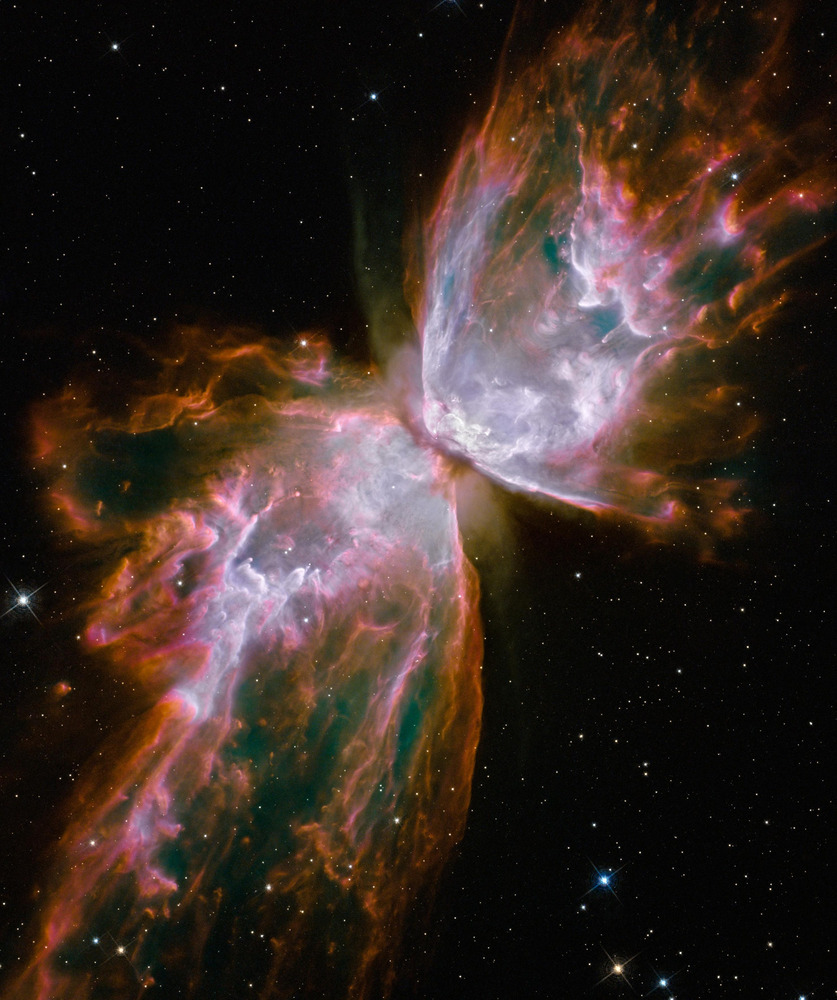
A dying star that was once five times the size of our Sun sits at the center of this 2009 photo of Planetary Nebula NGC 6302
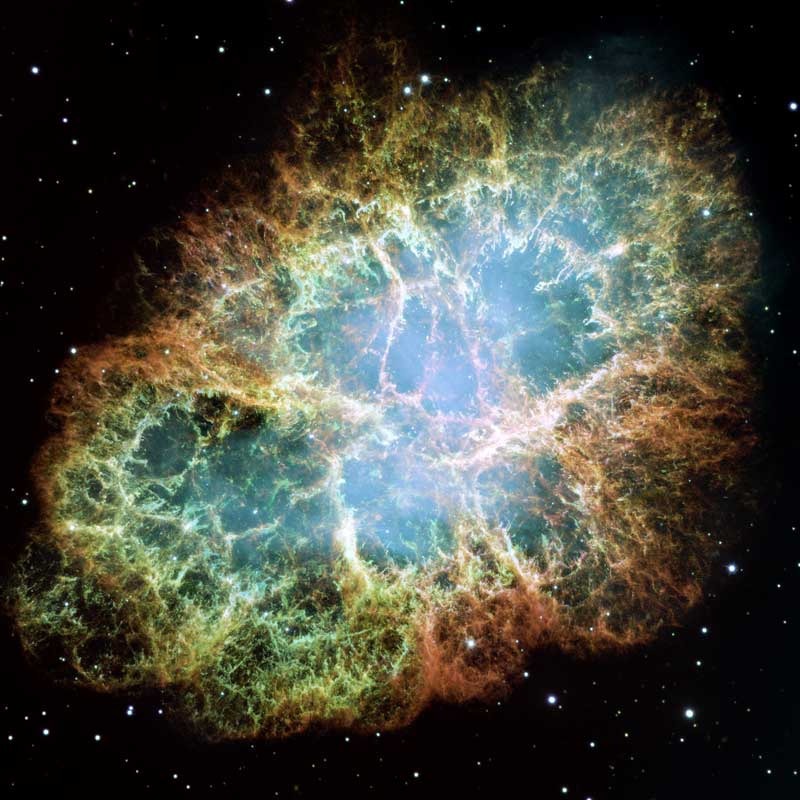
In one of the largest images ever made by Hubble, the Crab nebula is visible with bands of green, blue and brown. The nebula is made up of the expanding six-light-year-wide remnant of a supernova explosion. The exposures for this image were taken in October 1999, January 2000 and December 2000.
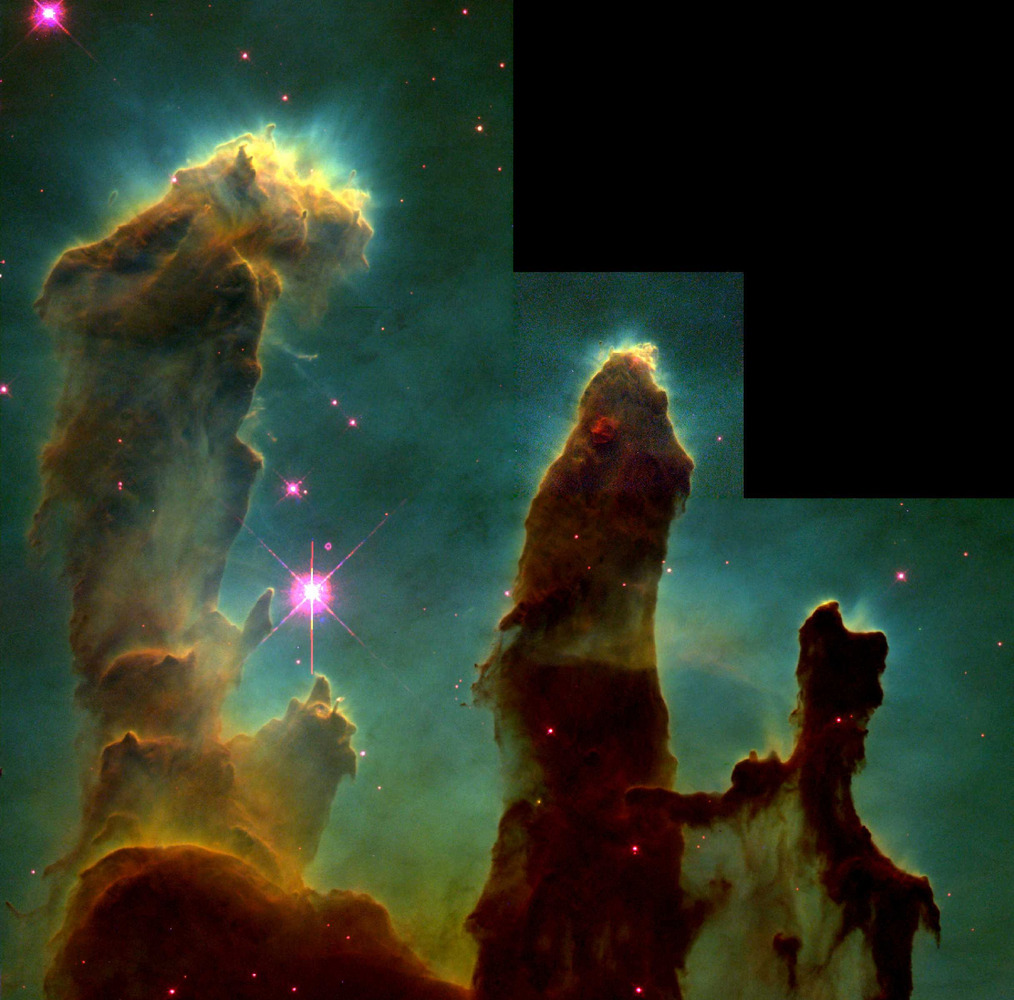
Taken in 1995, this view of the pillars of the Eagle nebula is one of Hubble's most recognizable composite images. The 32 exposures combined here were taken by four cameras, one of which has a magnified view of the nebula. The images from that camera were scaled down to match the others, creating the missing portion in the top right corner.
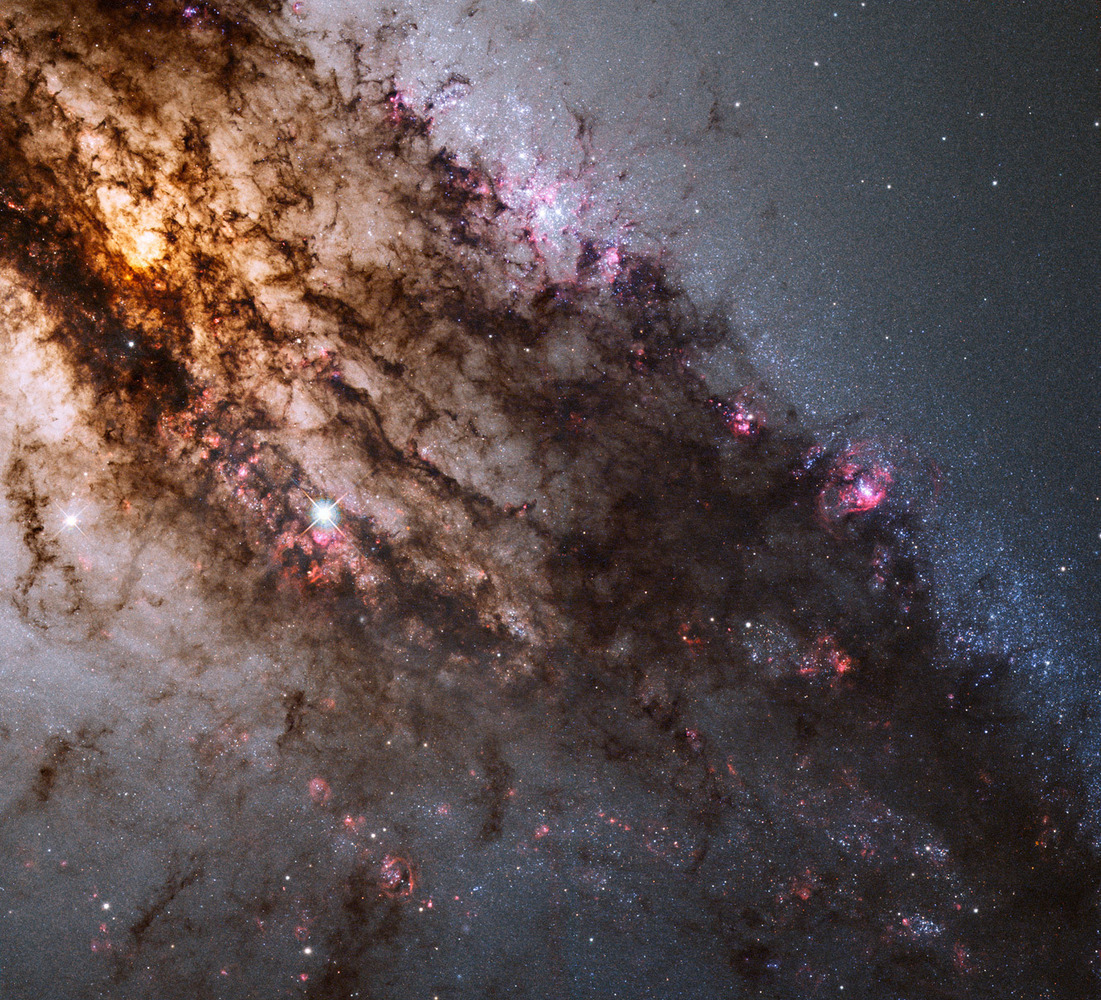
Elliptical galaxy Centaurus A shows evidence of a past collision with another galaxy in its warped gas-and-dust disk. The small red patches visible throughout this panchromatic 2010 photo are hydrogen gas clouds compressing into new stars
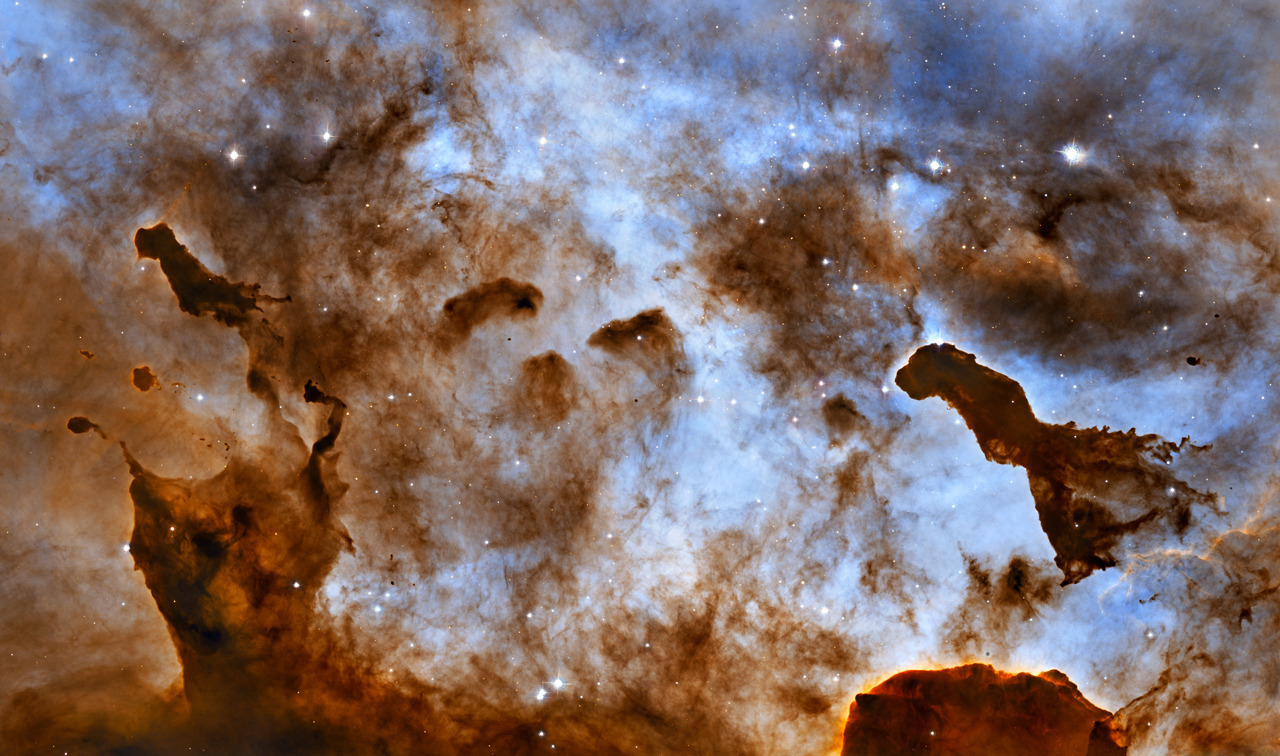
Radiation from massive stars carves bizarre sculptures from cold molecular clouds in the Carina nebula in this image from August 2005. Inside the chaos of violent stellar wind, new stars may be forming.
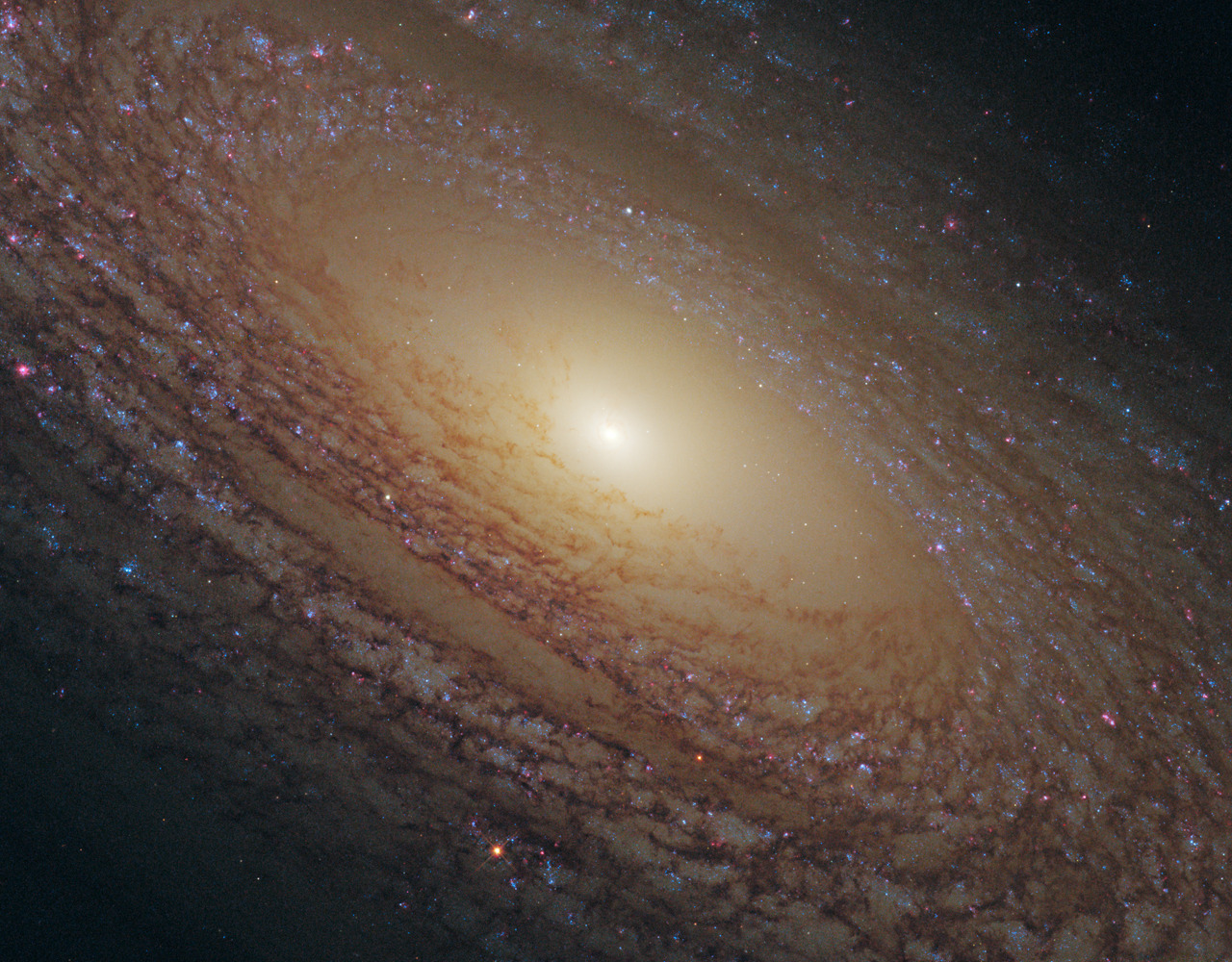
Spiral galaxy NGC 2841 of the Ursa Major constellation is made up of whirling stars and dust bands. The galaxy contains plenty of middle-aged white stars toward the edges and younger, blue stars near the center, but no red glowing that would indicate new star growth. Four different filters were used to capture this spectacular image in 2010.
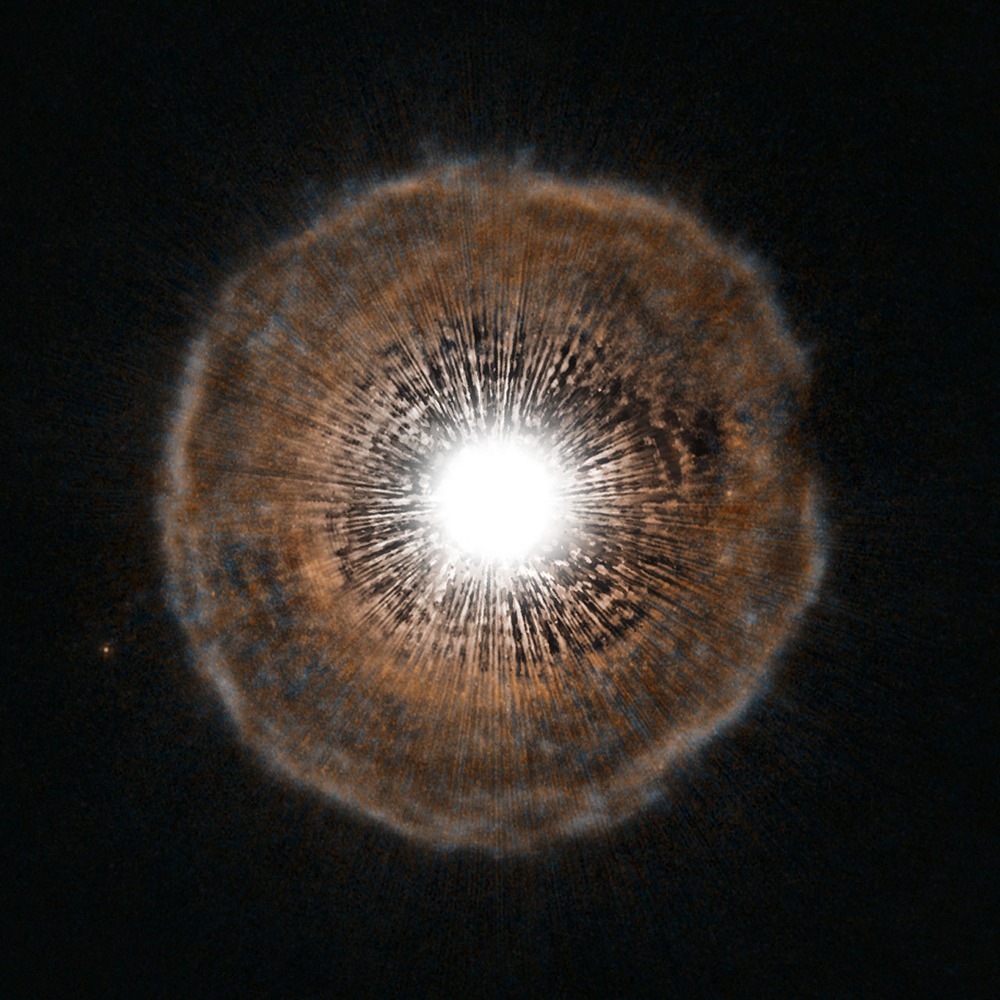
A massive helium bubble "pops" around red giant star Camelopardalis in this image from July 2012. The aging star's core has begun to fuse, and every few thousand years it emits another shell of gas. The star at the center of this photo is actually much smaller than its glow suggests — the body of the star could actually fit within a single pixel of the photo.
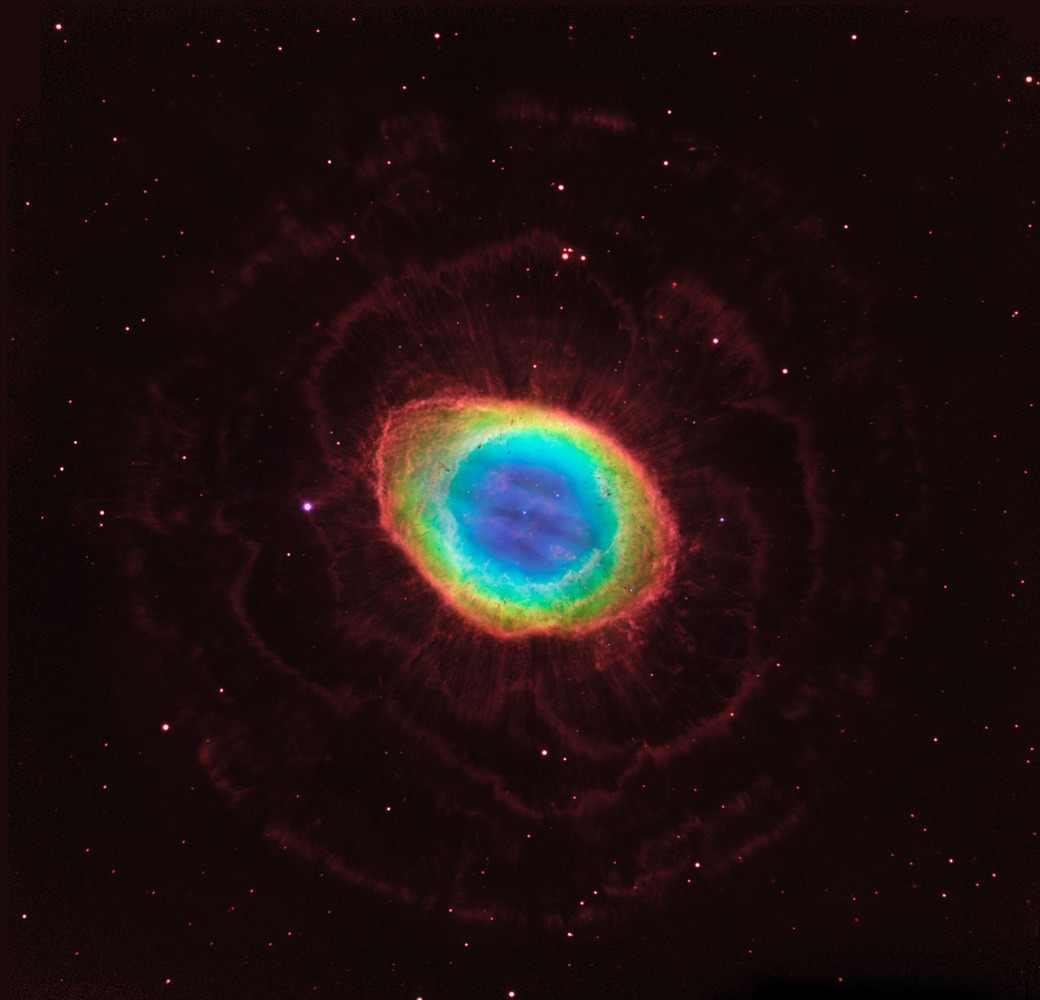
A composite image of visible light collected by Hubble and infrared data from the Large Binocular Telescope in Arizona produce this eerie 2013 depiction of the Ring nebula.
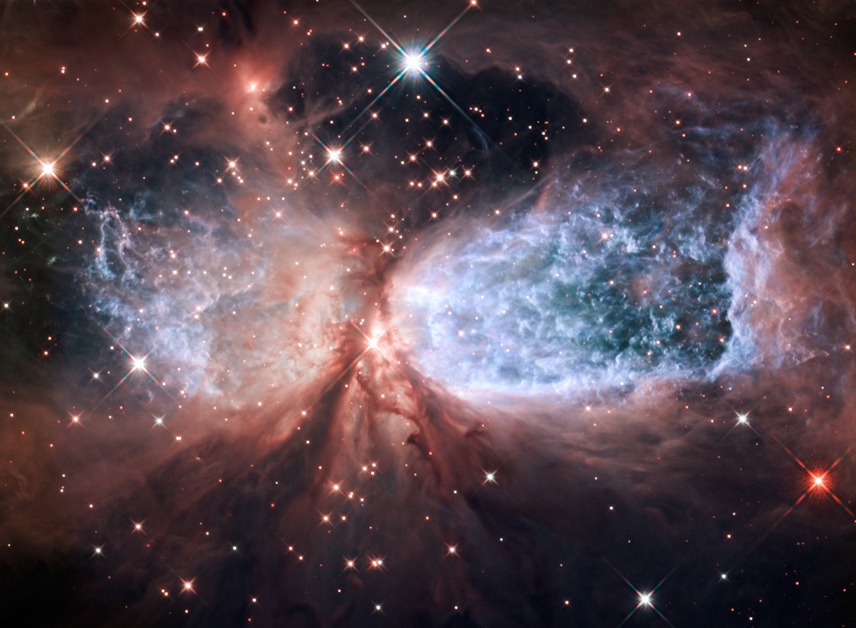
This 2011 image provides a dramatic view of bipolar star-forming region Sharpless 2-106. Twin lobes of super-heated gas glow blue around the darker dust and gas "body" of what appears to be a celestial angel.
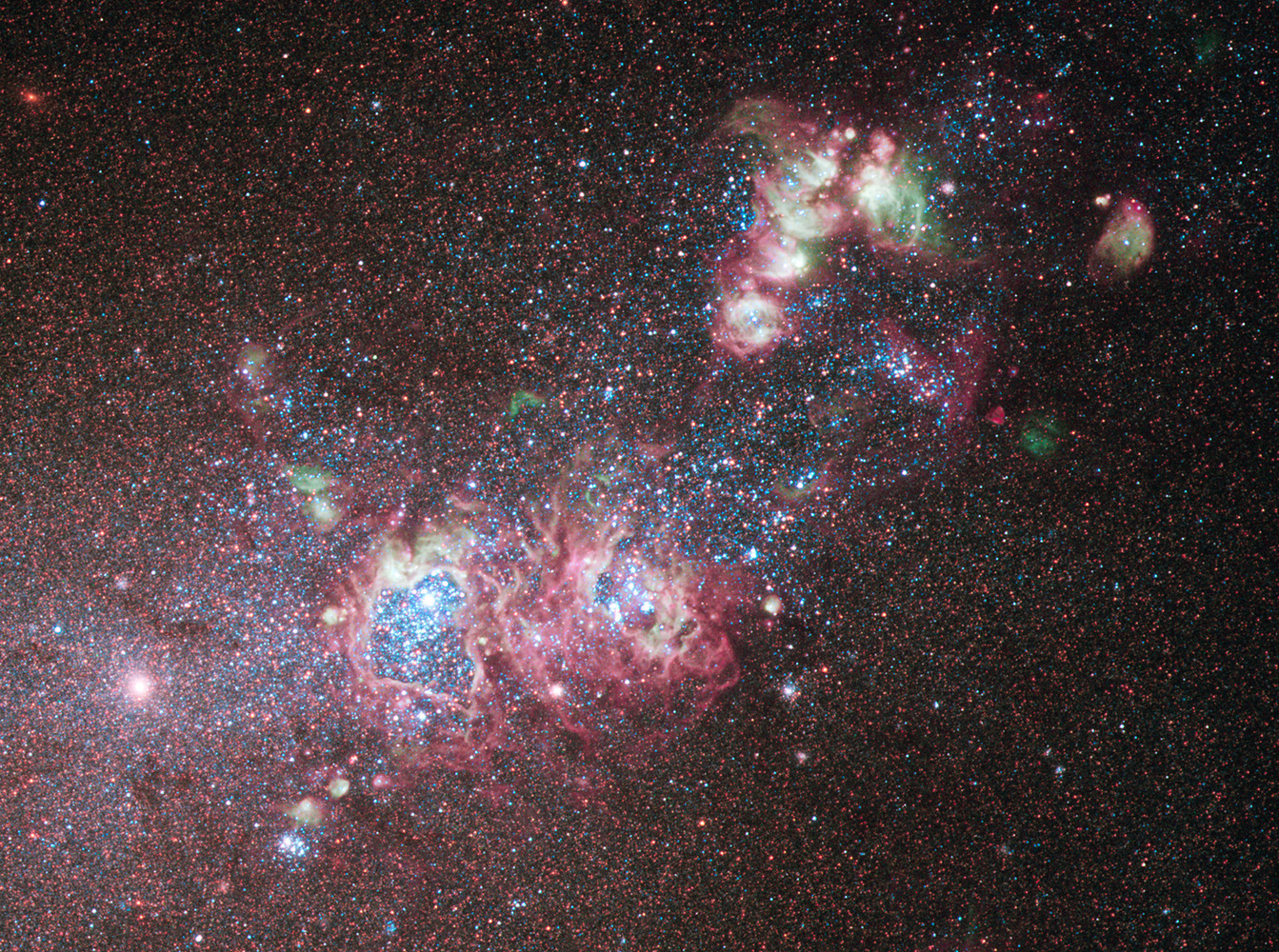
Dwarf galaxy NGC 4214 glows bright with young stars and gas clouds, but older stars are also observed in the relatively close-by formation in this 2009 image. A massive supply of hydrogen means the galaxy will continue creating stars for quite some time.
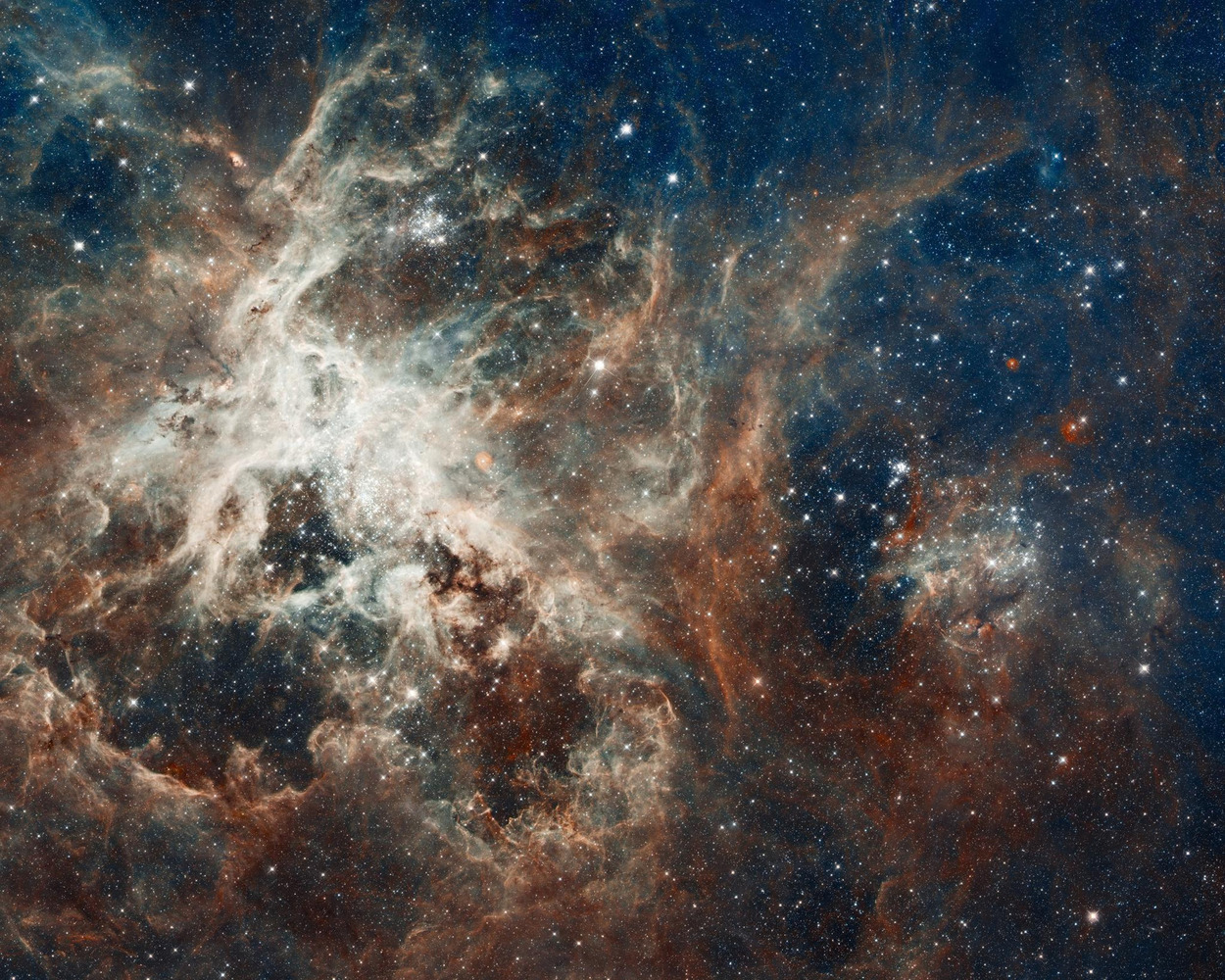
30 Doradus and its massive gaseous columns house newly forming stars in the Large Magellanic Cloud galaxy orbiting our Milky Way. It is the brightest nearby star-forming region, which allows scientists to observe individual stars within its formation via images like this 2012 panoramic.
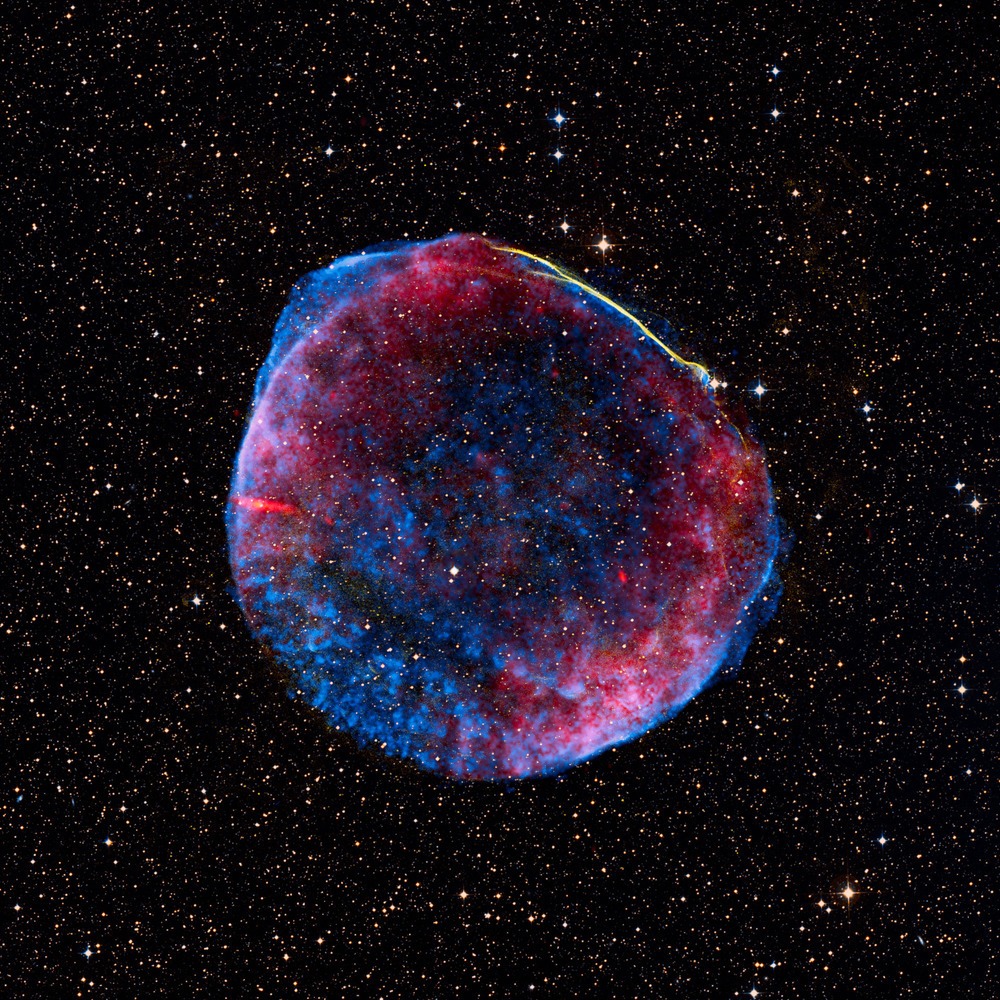
A composite of visible, radio and X-ray data provide this stars-and-stripes view of the supernova remnant of SN 1006. The image was released in July 2008, just in time for Independence Day.
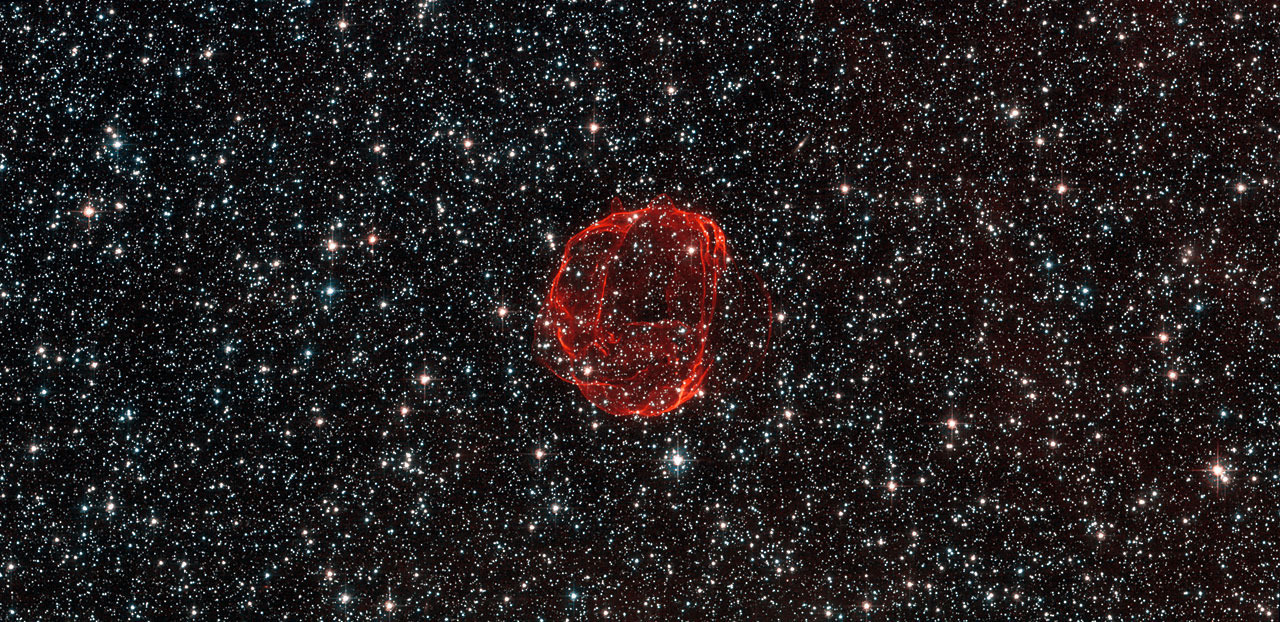
[divider scroll_text=”Back To Top”]
